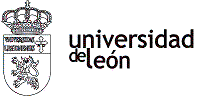Foreign Language
Methodology Textbooks Cameron, L. (2001).Teaching Languages to Young
Learners. Cambridge: Cambridge University Press. Legutke, M., Mueller-Hartmann, A. &
Schoker-v. Ditfurth, M. (2009). Teaching English in the Primary School.
Stuttgart, Germany: Klett. Moon, J. (2000). Children Learning English.
Macmillan Heinemann. Read, C. (2007). 500 Activities for the Primary
Classroom. Macmillan Books for Teachers. ENLACES WEB: Websites for Teachers of EnglishPrimary
School ESL: http://www.primaryschool.com.au/english2results.php Teaching
Ideas: http://www.teachingideas.co.uk/ Primary
Resources: http://www.primaryresources.co.uk/ General English Learning Websites with Activities
and Teacher Resources:BBC
Learning English: http://www.bbc.co.uk/worldservice/learningenglish/ British
Council Language Teaching: http://www.britishcouncil.org/languageassistant/ ‘Interesting
Things for ESL Students’ http://www.manythings.org/ CNN Story
Archives with Activities: http://literacynet.org/cnnsf/archives.html New York
Times Learning Network: http://www.nytimes.com/learning/index.html Online
Listening and Viewing Resources for Learners: http://ressources-cla.univ-fcomte.fr/english/sites/video.htm Englishcaster: http://www.englishcaster.com/ Pocasts
from Splendid Learning: http://www.splendid-learning.co.uk/podcast/index.html Confusing
Words and Expressions: http://www.bbc.co.uk/worldservice/learningenglish/grammar/ask_about_english/confusing_words.shtml Online
Advanced English Tests: http://www.english-test.net/ Advanced
English Lessons: http://www.englishpage.com/ Interactive
Grammar Exercises: http://www.angelfire.com/wi3/englishcorner/grammar/grammar.html The Routes
of English (Video and text resources on English language today) http://www.bbc.co.uk/radio4/routesofenglish/ Online Tools for TeachersBlogger
(for creating blogs): https://www.blogger.com/start Podomatic
(for creating podcasts): http://www.podomatic.com/ Online
Education Database (Free online resources for teaching and learning): http://oedb.org/library/beginning-online-learning/top-25-web20-productivity-apps Moodle (for
creating virtual courses): http://moodle.org/ The
Interculture Project (Database of interviews with international students): http://www.lancs.ac.uk/users/interculture/ Online
Concordancers: http://www.lextutor.ca/concordancers/ Links for Students to find their own online partners: http://www.italki.com/
http://www.friendsabroad.com/ http://www.lingofriends.com/index.php Links for teachers to find online partners for their classes: International E-mail Classroom Connections – This site helps university-level
educators find partner classes for their students: http://www.iecc.org/ ePALS Classroom Exchange – one of the largest international
networks for collaborative school partnerships: http://www.epals.com/search/
Kidlink – a
platform used by over
100,000 young learners in over 100 countries to find partners and communicate
with young learners across the world: http://www.kidlink.org/
Global Gateway - partner linking service: http://www.globalgateway.org.uk/ Grammar and Vocabulary Resource Books Carter, Ronald; Hughes, Rebecca and McCarthy,
Michael (2000). Exploring Grammar in
Context. Cambridge: Cambridge University Press. Eastwood, John (2005). Oxford Learner’s Grammar. Oxford: Oxford University Press. Hornby, Sally (2000). Oxford Advanced Learner’s Dictionary. Oxford: Oxford University
Press. Murphy, R.
2002. English Grammar in Use. A
Self-Study Reference and Practice Book for Intermediate Students, with answers.
Cambridge: Cambridge University Press Willis, D.
1997. Collins Cobuild Student's Grammar:
Practice material. Self study edition with answer key. London:
HarperCollins. Mccarthy,
M. and F. O'Dell. 2002. English
vocabulary in use. Upper-intermediate. Cambridge: Cambridge University
Press. Dictionaries: -
2003.
Collins Cobuild Advanced Learner's
English Dictionary. Glasgow: HarperCollins. (+ CD) -
WALTER, E. (ed). 1995. Cambridge Word Selector Inglés-Español. Diccionario temático del inglés
contemporáneo. Cambridge:
CUP. -
HANCOCK,
M. 2003. English Pronunciation in Use.
Cambridge: CUP. (+ 4 CDs). -
2002.
Collins COBUILD dictionary of phrasal
verbs. London: HarperCollins. -
1998.
Collins COBUILD dictionary of idioms.
London: HarperCollins. -
2003. Gran
Diccionario Oxford: Español-Inglés, Inglés-Español. Oxford: OUP. (+ CD). -
Cobuild Dictionaries online: -
http://www.wordreference.com/es/ -
http://www.onelook.com/ -
http://www.allwords.com/ |

 Slattery, M. & Willis, J., English for Primary Teachers., Oxford University Press.,
Slattery, M. & Willis, J., English for Primary Teachers., Oxford University Press.,